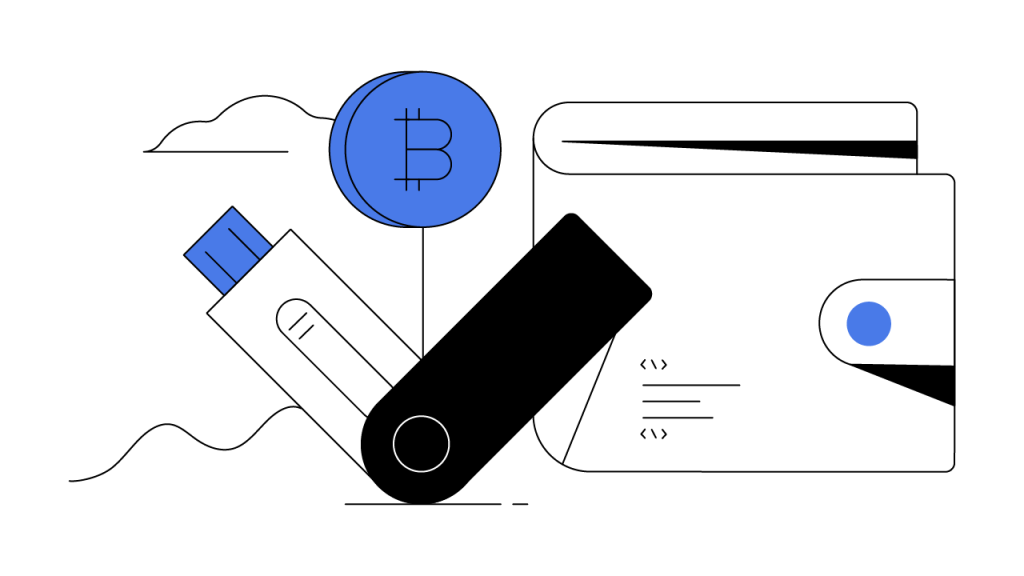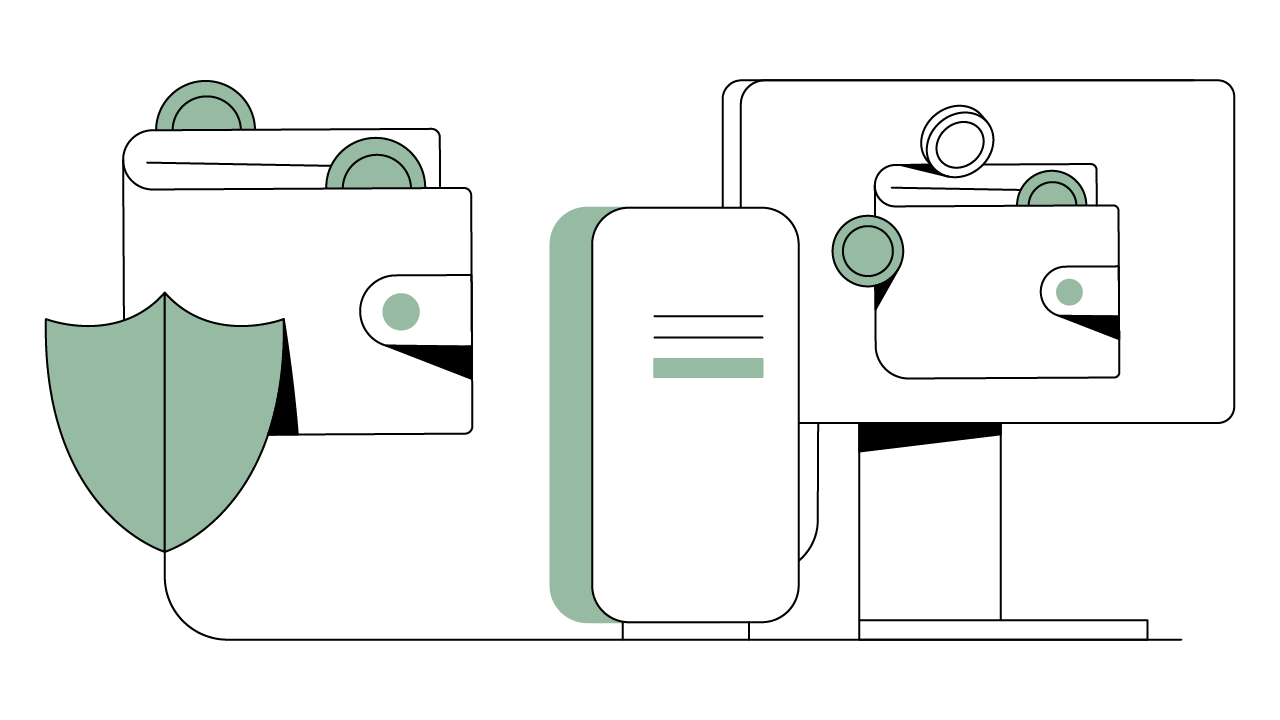Contents
Regenerate Your Hardware Wallet With a Recovery Phrase
Steel Is Ideal
Recovery Phrase: To Split, or Not To Split?
Recovery Phrase vs. Recovery Shares
Back-Up Hardware Wallet
Do I Need To Restore My Wallet on an Identical Device?
Extra Security for Recovery Phrases
Recovery Phrases Are Critical To Securing Your Crypto Hardware Wallets
How to Back up Your Hardware Wallet: Best Practices
A hardware wallet is a secure way to personally store your crypto. Just be sure to follow best practices so that you are able to recover it should you lose it.
Updated March 10, 2022 • 4 min read

Summary
There are two general concerns when using a hardware wallet to store cryptocurrencies:
1. Not being able to regenerate an inaccessible or unusable wallet
2. Theft of your wallet and PIN or recovery phrase and losing control of your funds as a result
Knowing how to regenerate your crypto hardware wallet is critically important, especially if you are using it to store significant amounts of crypto. You can access your funds without having a recovery phrase as long as you still have a working cryptocurrency wallet and know the PIN. However, it’s recommended that if you transfer your funds to a hardware wallet, you back it up immediately with a recovery phrase (also known as a seed phrase) to avoid losing access to your cryptocurrency if you forget your PIN.
Regenerate Your Hardware Wallet With a Recovery Phrase
Even if you take precautions, your wallet may become unusable or inaccessible. Fortunately, you can regenerate your wallet with its recovery phrase. A recovery phrase is a series of 12–24 words that you’re prompted to write down when setting up your hardware wallet. Many recommend neatly writing two-to-three copies of this backup phrase with a pen and storing the versions in safe places. It is critical to be sure that no one sees you do this, and to avoid storing your recovery phrase online where it would be more vulnerable to remote attack.
Steel Is Ideal
Because paper is fragile and easily mishandled, a better way to store your recovery phrase is to stamp it into metal, making it immune to water and fire damage. The easiest way to do this is to acquire a steel recovery phrase kit that you can purchase at an online retailer. You might even want to purchase two or three kits, as it’s a good idea to have multiple durable copies.
Recovery Phrase: To Split, or Not To Split?
Some cryptocurrency holders will break their recovery phrase into two or three chunks stored in separate locations. While this makes it harder for others to steal your recovery phrase, it also requires more responsibility on your part, and you would need to combine the disparate portions of your recovery phrase in the proper order to recover your wallet.
If you choose to split up your recovery phrase, you should consider keeping a few copies of each portion stored in secure and geographically distributed locations. However, while it's best practice to make the recovery process difficult for a potential thief, it should not be so difficult that you can’t recover it yourself.
Recovery Phrase vs. Recovery Shares
Some wallets offer the option of recovery shares. Like a recovery phrase, a recovery share is also an ordered sequence of words. You can generate several shares and decide what percentage of words is needed to regenerate your wallet. While you can create more than 10, many recommend a 2–of–3 or 3–of–5 scheme, meaning you would need, in the first case, two of the three shares to regenerate your wallet. Using recovery shares may be especially useful if multiple individuals or entities have joint ownership of a wallet.
You can use whatever method you like. You could do seven shares and choose a recovery threshold of 4–of–7, 5–of–7, or 6–of–7. You need all parts of a split recovery phrase to regenerate your wallet, whereas you only need a specific predetermined fraction of the recovery shares to ensure that you can recreate your wallet.
Back-Up Hardware Wallet
Instead of relying solely on the recovery phrase (or a recovery shares mechanism), some users regenerate their primary account by backing it up on a second wallet’s backup hardware device when they’re setting up their first wallet. In this way, you’d already have a functioning back-up device that doesn’t need to be regenerated. You may want to keep one hardware wallet easily accessible, and a back-up wallet stored in a safe place.
One benefit of this arrangement is that you know your recovery phrase was recorded correctly and works when you immediately regenerate your wallet on a second device. You’ll know that you can recover it again should you have issues with both hardware wallets. It is critical never to store a back-up hardware wallet and PIN together under any circumstances to avoid combining potential points of security failure.
Do I Need To Restore My Wallet on an Identical Device?
If a hardware wallet manufacturer stops operations, you can regenerate your wallet on any other hardware wallet because the recovery phrase for hardware wallets uses a universal standard. Some wallets accept recovery phrases of any length, while others may require you to convert a 24-word phrase into a 12-word phrase.
You could even restore your hardware wallet on a non-custodial software wallet if necessary, though that’s not a preferred practice. You can get a non-custodial software wallet by downloading an app on your computer or cell phone. This non-custodial software wallet would give you complete control of your keys, as opposed to using a wallet hosted by an exchange, for example. Instead, however, many people would recommend purchasing two identical hardware wallets, whether or not you regenerate your wallet immediately on the backup hardware wallet device. Doing this will also ensure that you are familiar with the controls of the backup hardware wallet, an important point because the set-up and functionality can vary somewhat between hardware wallet manufacturers.
Extra Security for Recovery Phrases
Some hardware wallets have the option to include a passphrase as an added layer of security, which creates a secondary key pair you can use to confuse malicious actors. You can think of this passphrase as an extra password that provides access to a hidden wallet. The recovery phrase that you chose when you set up your wallet shows your primary account; and your passphrase sends you to a secondary account. This can let you have two or more multi-currency supported accounts within the same hardware wallet.
Recovery Phrases Are Critical To Securing Your Crypto Hardware Wallets
While physically securing your wallet and PIN is vital, the storage of your recovery phrase is equally important. Remember to store any copies safely offline as unauthorized access would allow the regeneration of your wallet. If you have any recovery phrases stamped onto steel, consider keeping them in secret and locked locations. It’s also wise to split up your recovery phrase or use a recovery shares mechanism to help secure your wallet. You could also have a passphrase for a secret account to enhance anti-theft measures. Be sure to follow these best practices if you’re using a hardware wallet; you don’t want to be left without your keys and your coins.
Cryptopedia does not guarantee the reliability of the Site content and shall not be held liable for any errors, omissions, or inaccuracies. The opinions and views expressed in any Cryptopedia article are solely those of the author(s) and do not reflect the opinions of Gemini or its management. The information provided on the Site is for informational purposes only, and it does not constitute an endorsement of any of the products and services discussed or investment, financial, or trading advice. A qualified professional should be consulted prior to making financial decisions. Please visit our Cryptopedia Site Policy to learn more.

Is this article helpful?


